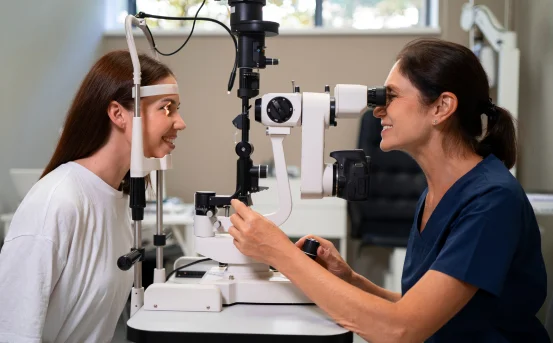Precise pediatric cardiac catheterization has revolutionized the diagnosis and treatment of heart conditions in children. With advancements in technology and procedural accuracy, precise pediatric cardiac catheterization offers a safer, less invasive way to assess and correct complex congenital heart defects.
Precision plays a crucial role in the success of this procedure. Because children’s hearts are significantly smaller and more delicate than adult hearts, any miscalculation can lead to complications. That’s why precise pediatric cardiac catheterization with its focus on accuracy, safety, and minimally invasive techniques is not just a medical procedure; it’s a breakthrough in how we care for young hearts.
Pediatric Cardiac Catheterization
Precise pediatric cardiac catheterization is a minimally invasive procedure used to diagnose and sometimes treat congenital or acquired heart problems in infants and children. The process involves inserting a thin, flexible tube called a catheter into a blood vessel (usually in the groin or neck) and threading it to the heart.
Once the catheter reaches the heart, doctors can :-
-
Measure blood pressure and oxygen levels within the heart chambers.
-
Assess the function of heart valves and blood flow.
-
Identify structural defects like holes in the heart (e.g., ASD, VSD).
-
Perform corrective interventions such as balloon dilation, stent placement, or closure of abnormal openings.
Why Precision Matters in Pediatric Cardiac Catheterization
Children’s hearts are smaller and more delicate compared to adults. This makes precision in catheter placement, imaging, and interpretation essential to avoid complications and ensure accurate diagnosis or treatment.
Key Factors That Influence Precision :-
-
Advanced Imaging Techniques :- Modern catheterization labs use high-resolution fluoroscopy, 3D rotational angiography, and echocardiographic guidance to enhance procedural accuracy.
-
Specialized Pediatric Cardiologists :- Pediatric interventional cardiologists undergo dedicated training to handle the anatomical and physiological complexities of children’s hearts.
-
Customized Pediatric Equipment :- Catheters and devices are specially designed in various sizes to fit neonates, infants, and growing children.
-
Real-Time Monitoring :- Continuous assessment of vital signs, oxygen saturation, and cardiac output during the procedure helps ensure safe outcomes.
Types of Pediatric Cardiac Catheterization
Pediatric cardiac catheterization is broadly classified into two types :-
Diagnostic Cardiac Catheterization
This is primarily used to gather data on the structure and function of the heart. It helps cardiologists confirm diagnoses made through echocardiography or MRI and plan for surgery or interventional procedures.
Conditions Diagnosed Through Diagnostic Cath :-
-
Pulmonary hypertension
-
Septal defects (ASD, VSD)
-
Complex congenital heart disease
-
Aortic or pulmonary valve stenosis
Interventional (Therapeutic) Cardiac Catheterization
This approach involves treating heart defects during the procedure, often eliminating the need for open-heart surgery.
Common Interventional Procedures Include :-
-
Balloon valvuloplasty :- To open narrowed valves.
-
Device closure :- To seal septal defects like ASD, VSD, or PDA.
-
Balloon angioplasty and stenting :- To widen narrowed blood vessels.
-
Coil embolization :- To block abnormal vessels.
Benefits of Precise Pediatric Cardiac Catheterization
-
Minimally Invasive :- Compared to traditional open-heart surgery, catheterization is performed through tiny incisions, resulting in quicker recovery and fewer complications.
-
Shorter Hospital Stay :- Most children can return home within 24–48 hours after the procedure.
-
Accurate Diagnosis :- Real-time imaging and pressure measurements enable detailed evaluation, which is especially helpful in planning complex surgical repairs.
-
Therapeutic Value :- In many cases, interventional catheterization provides permanent solutions without the need for major surgery.
-
Lower Risk of Infection :- Smaller incisions and quicker recovery reduce the likelihood of hospital-acquired infections.
Indications for Pediatric Cardiac Catheterization
Your child’s pediatric cardiologist may recommend cardiac catheterization for :-
-
Unexplained cyanosis (bluish skin)
-
Poor growth and development
-
Recurrent respiratory infections linked to heart defects
-
Detection of murmurs with suspected underlying defects
-
Evaluation before or after heart surgery
-
Balloon dilation or closure of heart defects
Preparing for the Procedure
Pre-Procedure Instructions :-
-
Fasting :- Your child may need to fast for 6–8 hours prior to the procedure.
-
Medical History :- Inform the cardiologist about any allergies, especially to contrast dye or medications.
-
Blood Tests :- Routine tests may be performed to check kidney function and clotting status.
-
Sedation or Anesthesia :- The child is typically under general anesthesia for comfort and stillness during the procedure.
During the Procedure: What to Expect?
-
The catheter is inserted through a blood vessel and guided to the heart.
-
Contrast dye is used for X-ray imaging of heart structures.
-
In diagnostic cases, measurements are taken, and the catheter is removed.
-
In interventional cases, corrective devices or balloons are inserted through the catheter.
Duration :- The entire procedure may last between 1–3 hours, depending on complexity.
Post-Procedure Care and Recovery
After the procedure :-
-
Your child will be monitored in a recovery area or ICU for several hours.
-
Vital signs and catheter site will be checked frequently.
-
Most children can resume normal activities within a few days.
Possible Side Effects (Usually Mild) :-
-
Bruising or swelling at the catheter insertion site.
-
Nausea from anesthesia.
-
Temporary arrhythmias or low-grade fever.
Risks and Complications
While pediatric cardiac catheterization is generally safe, some risks include :-
-
Bleeding or infection at the catheter site
-
Allergic reaction to contrast dye
-
Arrhythmias (abnormal heart rhythms)
-
Injury to blood vessels or heart structures (rare)
These risks are minimized in high-volume centers with experienced pediatric cardiac teams and the latest technologies.
Advances in Technology Supporting Precision
Modern pediatric catheterization is supported by several innovations, including:
-
Hybrid Cath Labs :- Combining surgical and catheter-based capabilities in one setup.
-
3D Mapping Systems :- Helping navigate the complex spatial anatomy of congenital defects.
-
Micro-Catheters :- Designed for neonates and premature infants with extremely small vessels.
-
AI-Assisted Imaging :- Increasing procedural accuracy and reducing radiation exposure.
Choosing the Right Pediatric Cardiology Center
For optimal outcomes, it’s essential to choose a specialized center equipped with :-
-
Dedicated pediatric cath labs
-
Experienced pediatric interventional cardiologists
-
Pediatric cardiac anesthesiologists
-
Advanced post-procedure care teams
Look for centers with a proven track record of managing complex congenital heart conditions using minimally invasive techniques.
Conclusion
Precise pediatric cardiac catheterization has emerged as a life-saving tool in diagnosing and treating heart conditions in children. By combining minimally invasive techniques with cutting-edge imaging and expert care, this procedure offers a safe, effective, and child-friendly approach to managing congenital heart diseases.






















